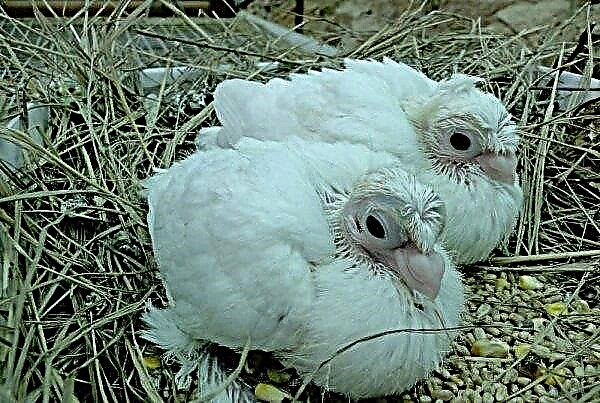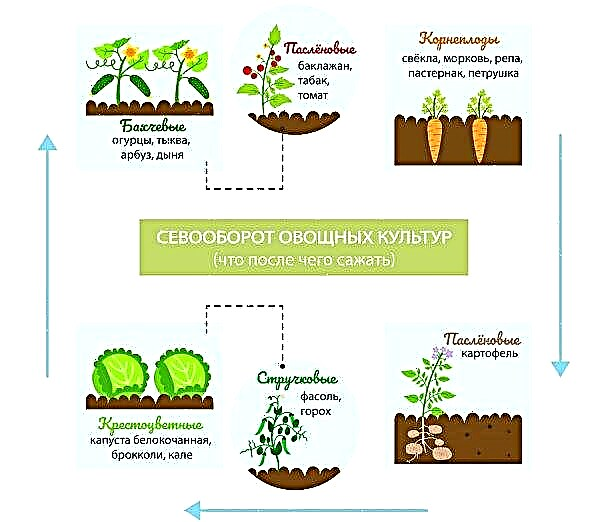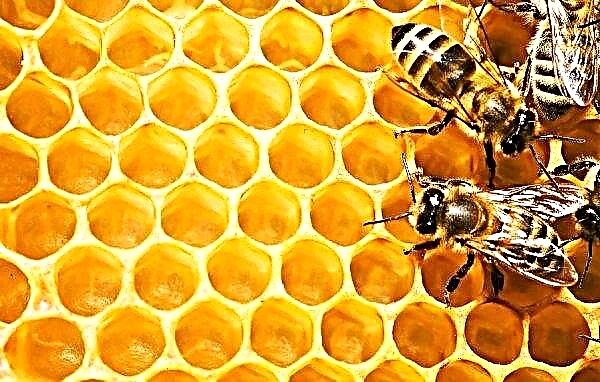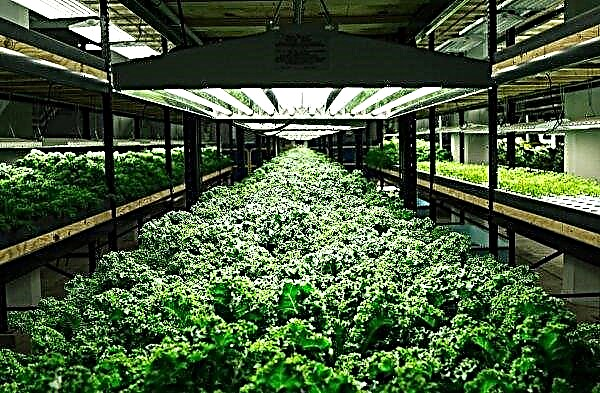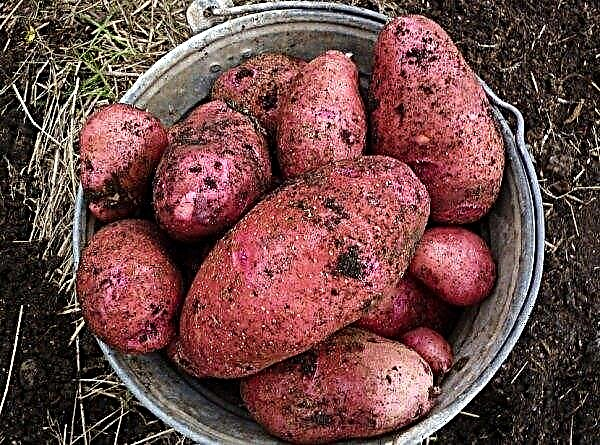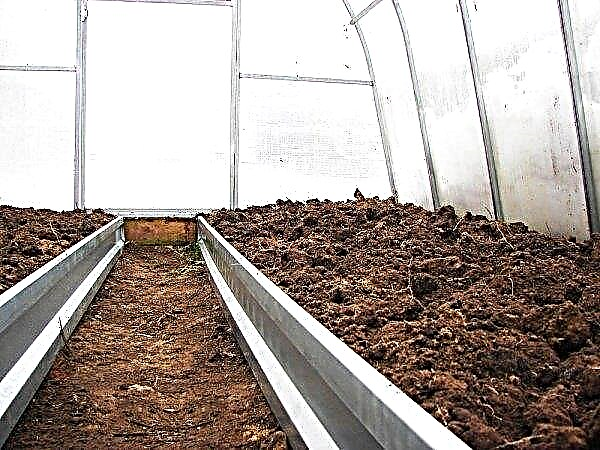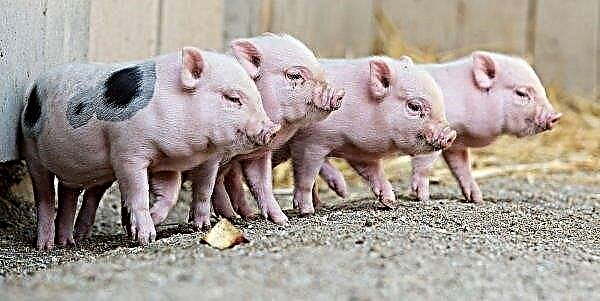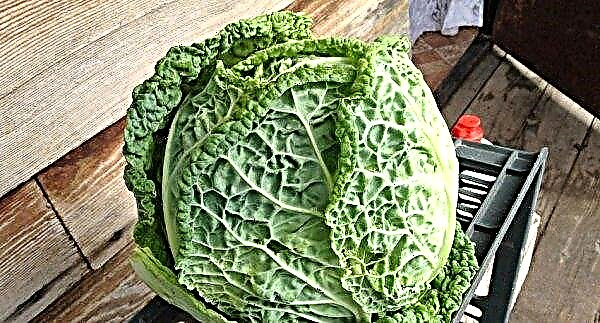Stomach congestion in a cow is a problem that needs to be resolved quickly. Untimely assistance may adversely affect the subsequent life of the animal. Let's figure out what to do if a cow has a stomach, and how to treat this condition.
Why the cow doesn’t have a stomach
The termination of the stomach is a consequence of one of the following reasons:
- The use of food, crushed into large fractions. The gastrointestinal tract cannot process insufficiently detailed vegetables (corn, carrots, turnips, pumpkin and others), which leads to stagnation.
- Inadequate crushing of food by animals themselves. A hungry animal with active and erratic eating of food can swallow it almost entirely, because of which the scar subsequently does not work.
- Foreign body contact. If large objects, such as bones or stones, get into the cow’s esophagus with food, trauma and complete blockage occur, as a result of which the digestive tract cannot continue to work properly.
- Stress. This is one of the most common reasons that the calf does not have a stomach, especially after calving. An animal that has survived a fright or severe emotional upheaval may experience a spasm in the digestive tract.
- Tumor in the esophagus. One of the likely symptoms of tuberculosis and leukemia requires immediate detection.
- Esophageal paralysis. It can occur after injury to the mucous membrane or muscles, or may result from rabies infection.

Signs of manifestation
The following signs indicate a stomach congestion in a cow:
- the cow does not eat, does not show appetite;
- the chewing reflex disappears;
- the animal ceases to burp;
- frequent jaw movements appear;
- productivity decreases;
- expressed general malaise;
- the animal begins to breathe heavily with concomitant shortness of breath;
Did you know? The cow’s stomach consists of 4 main chambers or departments: nets, books, abomasum and scar. Problems with the latter are most common when the organ stops working.
- nervousness, abrupt behavior, frequent tail waving appear;
- cough begins.

How to “get” a cow’s stomach
The animal is provided with peace and a small diet with a decrease in the amount of food and the removal of poor-quality food, after which they begin therapy. There are several treatments for stagnation of the stomach. These include: manipulations to extract a foreign object, conservative drug treatment, surgical intervention and alternative methods.
Foreign body extraction
If a foreign object has become a cause of gastric arrest, it must be removed.
The extraction procedure can be carried out independently in two ways:Important! Do not use sticks or other devices that could injure the mucous membrane instead of the probe!
- Induce vomiting. The cow should be pulled by the tongue so that the vomit comes out, and with it a foreign object. Previously, you can give the animal sunflower oil.
- Manually. This option is best done with an assistant. It is recommended that you protect your hands with a cloth by wrapping it around your forearm and shoulder. Fix the animal so that it could not make sudden movements, insert a wedge and one more solid object between the teeth. It is necessary to remove a foreign body using a probe, while pouring water or sunflower oil.

Drug treatment
Drug treatment in the form of antispasmodics can be used if necessary to remove a foreign body. In other cases, the veterinarian may prescribe injections of "Carbacholine" under the skin or taking drugs for the cardiovascular system with glucose.
Surgical intervention
If the previous treatment methods do not give a result, resort to surgical intervention. A cow undergoes esophagotomy - an operation to dissect the esophagus to examine or retrieve foreign objects.
Folk remedies
A stomach stop in a cow can be treated with alternative methods:
- In 200 g of warm water, add 100 g of yeast, leave for 30 minutes, then add 200 g of vodka and 100 g of granulated sugar and mix thoroughly until smooth. The animal should take the infusion several days 2 times a day.

- From St. John's wort, flax seeds and yarrow, a decoction is made and infused. It is applied 2 times a day until the digestive tract is restored.
- Mix 0.5 l of water with tincture of hellebore and allow to be taken orally.
- The stomach is washed with a solution of baking soda or sodium chloride.
Did you know? The medical name for the disease is atony of the pancreas. May be chronic due to untreated acute stages of the disease.
Preventive actions
In order not to stop the stomach, it is important to carry out preventive measures:
- The cow should be given quality feed.
- Vegetables need to be carefully chopped.
- Do not leave the animal hungry for a long time.
- Maintenance and milking should be carried out in accordance with accepted standards.
- The animal should be checked for diseases in time and scheduled tests should be carried out.
 A cow’s stomach stop can be cured if timely attention is paid to the symptoms and unusual behavior of the animal. Proper therapy will start the gastrointestinal tract, and prevention will help prevent the occurrence of stagnation in the future.
A cow’s stomach stop can be cured if timely attention is paid to the symptoms and unusual behavior of the animal. Proper therapy will start the gastrointestinal tract, and prevention will help prevent the occurrence of stagnation in the future.


